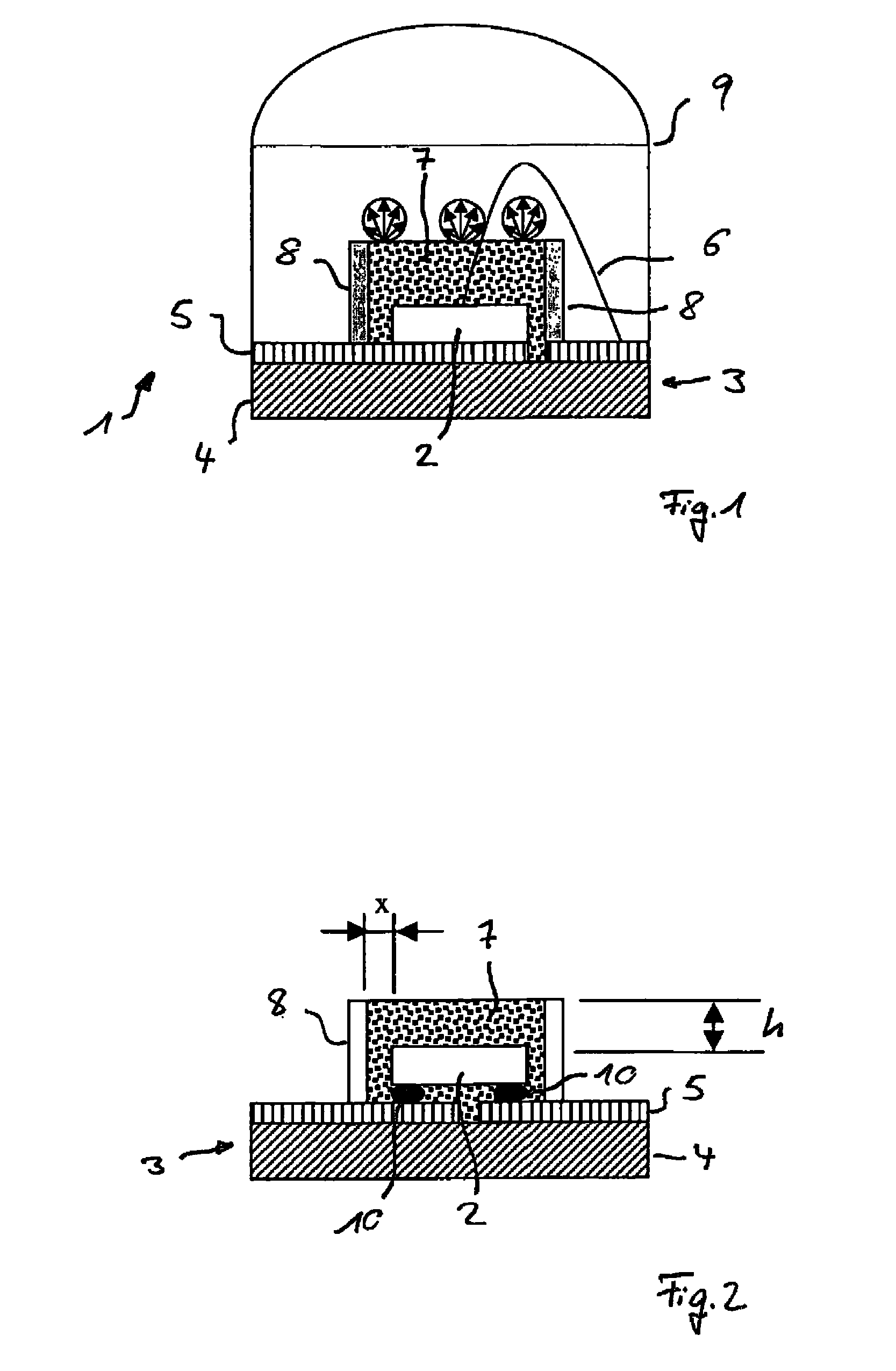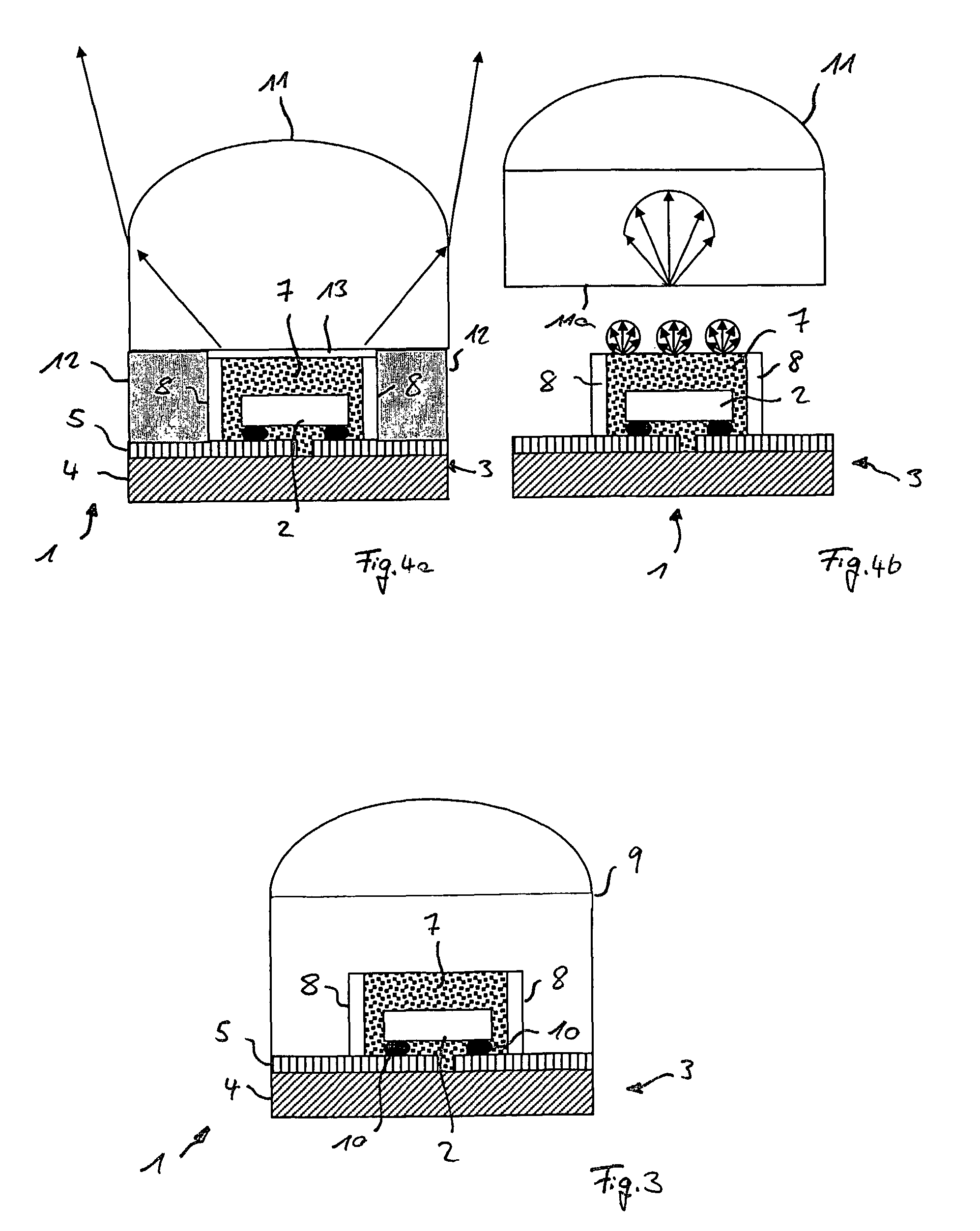Light-emitting diode arrangement comprising a color-converting material
a technology of light-emitting diodes and color-converting materials, which is applied in the direction of basic electric elements, electrical appliances, semiconductor devices, etc., can solve the problems of difficult to realize a uniform conversion of light, the light which emerges from the colour-converting material surrounding the led chip is not homogeneous white, and the production of a semiconductor element which directly provides white light has not yet been achieved. , to achieve the effect of avoiding the disadvantages described in connection with the sta
- Summary
- Abstract
- Description
- Claims
- Application Information
AI Technical Summary
Benefits of technology
Problems solved by technology
Method used
Image
Examples
Embodiment Construction
[0032]Firstly the light-emitting diode arrangement illustrated in FIG. 1 and provided with the reference sign 1 has a light-emitting diode chip 2—preferably emitting blue light—which is arranged on a base 3, which has an insulation layer 4 as well as an electrically conductive layer with conductor paths 5, whereby for contacting of the light-emitting diode chip 3 bonding wires lead from these conductors paths to the upper side of the chip. It is to be noted that the base 3 could also be configured in other manner. In particularly specific measures could be taken which make possible an effective heat dissipation from the light-emitting diode chip 2.
[0033]To convert the light emitted by the light-emitting diode chip 2 into a white light mixture, a colour conversion material 7 is provided which surrounds the light-emitting diode chip 2 and has colour conversion particles, in particular phosphors, which convert at least a part of the light into a light of another wavelength. In accordan...
PUM
 Login to View More
Login to View More Abstract
Description
Claims
Application Information
 Login to View More
Login to View More - R&D
- Intellectual Property
- Life Sciences
- Materials
- Tech Scout
- Unparalleled Data Quality
- Higher Quality Content
- 60% Fewer Hallucinations
Browse by: Latest US Patents, China's latest patents, Technical Efficacy Thesaurus, Application Domain, Technology Topic, Popular Technical Reports.
© 2025 PatSnap. All rights reserved.Legal|Privacy policy|Modern Slavery Act Transparency Statement|Sitemap|About US| Contact US: help@patsnap.com



